Why Do We Look for Data in the Museum?
In Art Project 2023, João Enxuto and Erica Love imagine the future of the Google Art Project, the search giant’s effort to reproduce images from the world’s top museums as it develops over the next decade. The multimedia performance documents the slow erosion of the museum under the logic of corporate interests and the breathless adoption of digital innovation by none other than Google, whose stated goal is to “organize the world’s information and make it universally accessible and useful.” Google purchases the Whitney Museum’s Breuer building and repurposes it as an “immersive” and “interactive” physical interface for the Art Project, where patrons have access to high-resolution images of the original works of art. Each room is curated based on algorithms that crawl the user’s profile to predict optimal artworks. Art history PhDs leave the academy to work as handsomely paid human docents, guiding users who log in with Google Plus accounts. Tech luminaries hail the initiative as a “democratic platform that erases the territorial boundaries and spatial limitations that hampered the circulation of the world’s greatest artworks.”
In a short time the Breuer building is deemed “too expensive” to maintain and is replaced with a 3D–printed replica, assembled by a Google subsidiary. Slight aberrations in digital files begin to appear, causing equal parts panic and spectacle. Eventually a slew of works begin to disappear from Google’s backup servers. Within months, they are all gone.
Enxuto and Love close their dystopian scene with a fictional article from the 2023 issue of Artforum, entitled “On the Future of the Museum.” The piece quotes Marcel Breuer’s comments at the presentation of his new Whitney Museum building in 1963: “It is easier to say what [the museum] should not look like. It should not look like a business or office building, nor should it look like a place of light entertainment.”
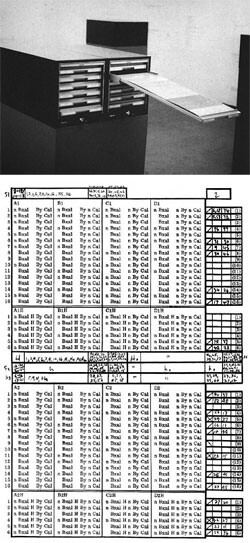

The critique of the museum was a defining discourse of the twentieth century. At the start of the century, early modernists lambasted its entombment of “real” life. Later it endured Foucauldian and postcolonial critiques that characterized the museum as an embodiment of Western colonialism and cultural hegemony. The museum survived these critiques; they were largely confined to academia and critical theory. But today the museum faces more virulent destabilizations that have emerged alongside new behavior from the general public, wherein patrons transform the museum’s physical assets into digital assets—uploaded, downloaded, visualized, shared, and digitized. Museums of various stripes now adapt to “users” who treat institutions not as a storehouse of physical objects but rather as a data set of image files.
Today we find the museum organizing itself for transmission and retrieval, anticipating the final aspirations of an algorithmic regime. The resulting database logic aligns the institution with interests originating from the model of the Silicon Valley enterprise—in constantly updating streams/cycles, the museum reformats its content towards structured, indexed, or digitally stored data sets or sets of relations among data. That this information is designed for queries, updates, algorithmic manipulation, and mass scalability is of central importance.
The museum is pressured into adapting to the logic of the database from all sides. Increasingly we access it, and its contents, by executing a query. At this juncture we begin to entertain questions of absurd technological determinism. For example: Is a museum a database? While this may be a ridiculous provocation on its face, we have seen that anxious cultural institutions are among the first to uncritically adopt the metabolism of database, to transform the institution into an indexed site of transmission. Though to many it appears somewhat emancipated from its traditional critiques—the notion of transparency, democracy, and access have been loosely ascribed to the newly digitized institution. Yet beneath the surface the museum has become contingent on a metabolism that is eager to mimic the logic of the database, the engine feeding the scalability required by the private digital enterprise.


The Metabolism of the Database
Several years ago Hito Steyerl asked if the museum was a factory.1 But today our factory is something more like a data center. We are confronted with networked capitalism that runs at digital speed, where questions of solidarity and sustainability transform into questions of algorithmic regulation. Meanwhile digital natives and administrators hector institutions towards “innovation” by pointing to their own inevitable cultural irrelevance. A market logic arises in which institutional relevance is modeled after corporate risk.
Under the guise of the “digital as a dimension of everything,” this loosely organized group has been successful in implementing all manner of networked, data-driven modifications, from mobile apps to active social media engagement and marketing, or immersive digital experiences embedded into the museum’s halls. These innovations are in response to the “reality that the digital touches every aspect of a contemporary organization,” one that “mandates that it be woven into the fabric of the institution across departments and objectives.”2 But where does this apparently self-mandating drive originate? Who has tasked the museum to scale its holdings according to a techno-utopian plan of universal access and networked exchange? As it becomes clear that museums cannot equal competitors that natively leverage digital networks, in turn their administrators are measured by the alacrity with which they can match their alternatives in the realm of content production, publication, and dissemination. An institution’s cultural capital appeals to metrics that emerge from the metabolism of the database: the ability to be queried, manipulated, updated, sorted, and accessed simultaneously.
While the initiatives advanced under this banner of “the digital” range from the illuminating to the absurd, ever so slightly the imperatives of the database are integrated into the museum. For one, most major museums have now appointed managers of digital programming. The Museum of Modern Art in New York has appointed a “Director of Digital Content and Strategy” who in a press release stated her goal of “achieving scale for the Museum’s programs.”3 Both inside and outside the museum, thinking that used to be confined to an esoteric corner of database theory has suddenly been foisted into popular media, a development conditioned by the everyday tools that use databases to power popular applications and platforms.
In The Language of New Media, Lev Manovich describes “database logic,” a new Panofskian “symbolic form” favored by new media objects. This, he claims, is nothing less than “the projection of the ontology of a computer onto culture itself.” If “the world appears to us as an endless and unstructured collection of images, texts, and other data records, it is only appropriate that we will be moved to model it as a database.” He also referred to its “blind victims” who uncritically adopt the database form.4 Yet we might extend beyond the theories of the database as a new media object and begin to think through the social and political implications for the cultural institution. Assessing a politics of the database means assessing the potential for its logic to literally operationalize neoliberal practices in the cultural sphere.5
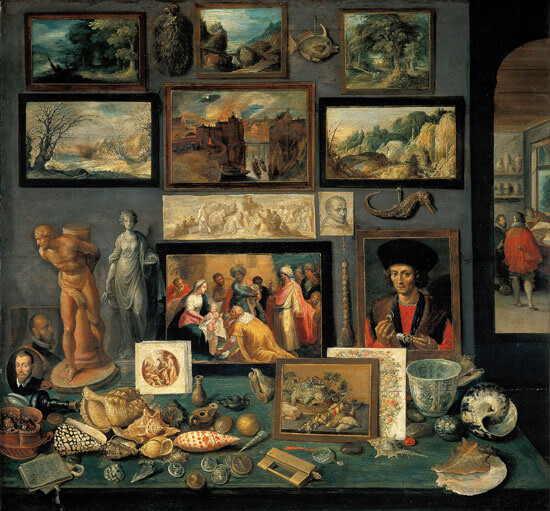

Branded Content
Once an Apollonian, Enlightenment edifice, today the museum anxiously produces content to satisfy the swift mill of digital networks. But when the museum engages in digital content marketing, what is it marketing—beyond its own obsolescence?
The rhetoric of “the digital museum” resembles the New Institutionalism that emerged in the 1990s, when museums were repurposed as socialized spaces and courted participatory patronage. Today the museum looks less to the rituals of relational aesthetics—social, collaborative, and open-ended—but instead to the entrepreneurial paradigm of the technology enterprise. For the first time in the history of institutional critique, the speed with which new subjectivities are formed has dramatically increased. The institution now employs the tools of digital exchange as the prism through which to engage in its own critique. While digital natives tend to associate this type of institutional critique with its broadly leftist forbearers, the rhetoric of the digital museum may also be viewed as a new elite reconstituting the museum along technocratic logics. The so-called “Open Data” movement—which aims to “democratize the ability to produce information and knowledge, rather than confining the power of data to its producers”—has been awkwardly transposed onto the world of museology. The same criticisms of the Open Data movement apply to the unquestioned rush to digitize the museum’s contents, specifically the charge that such initiatives amount to a “neoliberalization” of information formerly held in the public trust.6 That is, to convert the institution into a market-ready form and, crucially, to transition the individual into a relationship with the museum that is entrepreneurial, self-directed, and deterritorialized.
While by no means monolithic, the Open Data movement did not arise out of a vacuum. Its agenda of transparency engages in a “politics of the benign” in order to argue for the inherent moral value of liberating information.7 This in spite of the ideological assumptions and corporate support of such initiatives. The transfer of content from an institution to various telecommunications and software platforms may not present immediate negative effects, but couching it in the rhetoric of corporate PR strategy about freely accessible information is perhaps the perfect dream of neoliberal ideology.
The calls for the digitization of the institution are not only based on the database form or the inherent qualities of their respective digital formats. Instead, these demands are grounded by the database’s ability to accept the new types of user desires and expectations, both haptic and epistemological. On the one hand, the innovations appeal to practical patron behavior. The Metropolitan Museum’s iPhone app, for example, relies on structured data to power user experience. As increasing numbers of patrons began relying on mobile phones, it seemed logical to update the services available to visitors. Yet the more interesting questions lay at the very heart of the most basic gesture of the museum. A definitive aspect of the traditional museum was the marking off of a cultural space that celebrates historically significant developments according to a telos. In effect, for a long time it operated as a stage that pointed to genius, mystery, and expression that owed little to digital dissemination or algorithmic supplication, where ideas and skills are deemed worthwhile to our culture independently of their potential to circulate in networks. While it operates in service to varying ideologies and purposeful constructions of usable pasts, a museum is always somewhat of a playground, designed as much for scholarship, preservation, and inquiry as it is for momentarily placing oneself in a fiction. And so today contemporary museum makes demands on our leisure time at the very same moment that the database form determines which images are displayed to society at large. Thus the museum cedes this control to databases, whose content circulates through networks governed by proprietary algorithms. Such an oversimplification is useful to frame the manner in which the museum’s fundamental cultural position is drawn in, seduced by a transformation into an indexed collection, structured much the way a good database would be: consistent, atomic, scalable, and easily searchable.
Consider what is at stake when the museum outfits the audience experience to accommodate Google Glass. Never mind the more general question about the genealogy of such an idea, which originates with a massive private enterprise’s attempts to normalize a product into increasingly biometric terrains. When a museum joins in this accommodation they surrender to the idea that their holdings are objects in a database, revealing the first shift of an institution embroiled in the logic of net utopia. By digitizing the works so that they can be rendered and made searchable with image recognition technology, the institution—tasked with holding cultural objects in the public trust—moves the aesthetic experience into a hardware apparatus whose proprietary format is dictated by a private company. As the institution crosses over this line, they begin a process that denigrates the free play of narrative, the outsized imaginative force that silently sweeps through the heterotopia of the museum space and advances the indexical, algorithmic performativity of its data as yet just another platform for user experience. The institution also willingly transfers enormous amounts of hard-won cultural capital—in the form of content, attention, and cultural imprimatur—into the networks of lean, global technology organizations in exchange for the momentary spectacle of a suite of soon-to-be-deprecated hardware.
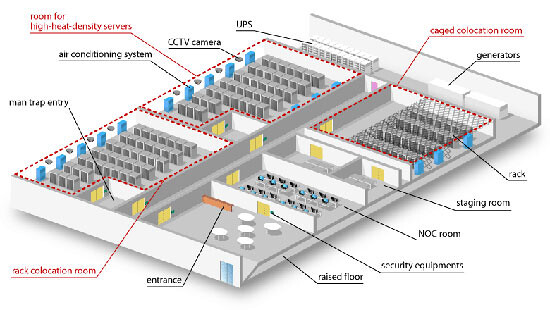

Database and Collection
We cannot seek data in the museum the way we look for it in the database. When we do, we find the database form mapped onto a historiographical function for which it was not designed. Information stored in a database is not designed to conjure, remind, or encourage users to look back in retrospect. On the contrary, these data exist to power an application, usually an algorithm that predicts or optimizes future functions. Though we often use the term “memory” to measure the storage capacity of a database, this is far from the same type of memory that the museum constructs and preserves. It is not passive data collected and stored by virtue of its a priori importance but instead material that achieves utility only through its potential to unequivocally deliver a command to an actor with a specific intent, an intent to which the database delivers unmatched efficiency and competitive advantage.
For Manovich, the museum both requires and produces narrative, while the logic of the database eschews narrative in favor of ordered, efficient, end-user retrieval. The museum contextualizes its holdings through scholarship, discourse, and display. Thus those who assemble and maintain museum collections—curators, directors, conservationists—operate with a fundamentally different set of concerns than a database administrator. The database administrator has specific, technical principles for database design that will allow them to implement proper indexing, integrity, and structure. Every factor considered relates directly to optimal end-user performance, not, as it were, some higher calling to organize information as an abstract service of historical memory. But what are the characteristics of the “end user” posited by the architects of the museum-as-database? To assume that such a decision is a neutral outgrowth of the self-evident mandate that cultural institutions respond to capital’s drive to organize the world’s information is to fundamentally conflate the specific attributes of museum and database.
The digital database can, in large part, replace the museum’s traditional function of presenting an object-by-object view of art history for contemplation and study. However, the museum allows us to step out of time, whereas the database is by definition obsessed with time. The museum marks off a space, but the database is an apparatus necessary for the deployment of information into any situation that will accept its format.


Despite the well-known resources such as MoMA’s online collection, the Getty’s Open Content Program, or the Metropolitan Museum of Art’s newly available digital archives, it appears unlikely that the museum will become a database in the literal sense. Nearly all of the data on the backend of major museums are not, of course, only datasets: they are merely another means by which to represent really-existing physical holdings. Even as they account for shifts toward more common methods of engaging with the museum, these digital archives do not yet replace the original institutional mission of physical retrieval and storage. The exceptions are institutions solely dedicated to storing works that were born digital. However, there is a crucial difference between this type of arts-tech collaboration and the rest of our museums that are too often paved over in favor of blindly fostering disruption and increasing access.
In a recent panel at South by Southwest, entitled “Everyone’s a Curator: Do Museums Still Matter?” several digital media professionals from major museums asked, “How can museums compete for engagement online?” In other words, how can a museum act more like a database? Willa Köerner, assistant manager for digital engagement at the San Francisco Museum of Modern Art, offered this:
Museums are just starting to accept the fact that the Internet and social media have given rise to a whole new way of disseminating information, where friends’ (and even strangers’) comments and opinions often mean more than anything an “expert” could have to say. Information and ideas have been set free, and museums are still learning how to function in this free-flowing, democratized arts and culture ecosystem.
The museum derives its special status from the “un-queryable” structure of its objects. And this museographic status has been concomitant with the aesthetic subject’s relationship to art in the West since the Enlightenment. The “museum as database” posits an opposition to this legacy model, which might be roughly organized under the vague neologism “the digital.” “The digital” semantically smuggles in the ideology of “the digital”—a strange mix of neoliberal thought and Silicon Valley logic in which every existing structure constitutes a problem that can be solved by crowdsourcing, geolocation, algorithms, and shared digital networks. But the construction of these databases involves the biases, desires, and fraught decisions of their architects. Further, they privilege the end user, the optimized query, and the scalable totality. An institution’s newly adopted “open access” mantra does not hold the promise of being culturally autonomous, as one might contrast it to the hegemonic decisions made by a Western museum curator in structuring a collection of cultural artifacts. In fact, the notion of a culturally autonomous database is perhaps the height of ideology itself.
The notion that “raw” data arrives on the scene free of bias, somehow a reflection of the natural order of phenomena, a mere element that constitutes its eventual conversion into knowledge, likewise soothed the epistemological uncertainties of postmodernism. The institution, wary of grand narratives and “great men”—those slivers of anectdata amid a world awash in measurement—could suddenly align with both the free market and the digital database as part of what Karsten Schubert has called “The ‘Discovery’ of the Audience.”8
A cultural database that is free of ideology is a convenient myth that came out of the rhetoric of the institution as a passive platform. As Lane Relyea has shown, a database always appears as “a passive object, never a verb.” Meanwhile, the art world’s “projects and platforms” mobilize these data through networks. In Your Everyday Art World, Relyea relates these forms to advances in digital technology. For Relyea, the logic of the database is that which “weakens ties within the museum’s collection, renders it more passive and informational, that transforms it from being a canon or a tradition or and ideology into being, simply, one’s personal toy box.”9
A database comes precisely into the zone of utility when the phenomena from which it extracts information are too large to be displayed in one view. The database in this case is an instrument of documentation and measurement, one always set up to be queried in a partial manner. Though the database can play a part in “democratized” communication over nonhierarchical networks, it has its own special meditative powers. There is hegemony in data. Data are valuable because they extract from reality: the earliest appearance of the notion of data was gleaned from nature. As Rob Kitchin argues in The Data Revolution, the way that data are understood by a society has changed throughout history. Citing Daniel Rosenberg, he points out that the emergence of the term is associated with modernity and the growth of science, and thus its alignment with the “pre-factual” or “pre-analytical.”10 Likewise, today “big,” mobile data—the very aggregations supposedly upending the humanities and cultural research—emerge alongside the very recent veneration of the free-market ethos, an informational economy whose inefficiencies are modeled away by structuring data through algorithmic architectures and global-scaled storage.
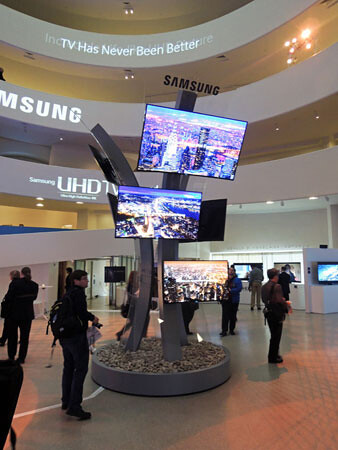

New Inputs, New Interface
Prior to new media, the database was a foreign entity. Traditional art unified the art object and its display interface and this fusion made the database an unwelcome form in both theory and practice. Yet, as Manovich explains, new media separate the work from its interface, allowing the database to store and render different versions of the original. Here the database acts as the “support” with many compatible methods of display interfaces. If new media lend themselves to the database, they also impel the end user to shift the narrative burden on to the very structure of that database. Narrative, then, is not an end in itself but merely a byproduct of navigating a database with varying potential result sets. Manovich continues with the claim that “databases can support narrative, but there is nothing in its form that would foster its generation.”11 Instead, the narrative is always immanent by virtue of the various human decisions made by the database administrator. It is masked, however, by the production of a result set that appears to the end user as an agnostic, empirical list of objects. The logic, the structure, and the query through which the information had to first pass are always hidden.
After the initial crest of New Media discourse in the late aughts—once the insularity and specificity of the “Art Formerly Known as New Media” ceased to serve as a useful distinction12] and exceed[ed]] the terminology by which they have, at least initially, been theorized and categorized.”]—scholars such as David Joselit have turned their focus to the “image explosion” referenced by contemporary artists. The definition of such work is then expanded to “embrace heterogeneous configurations of relationships or links,” and gains its value from image circulation in free networks and neoliberal markets.13 For Joselit, “what now matters most is not the production of new content but its retrieval in intelligible patterns through acts of reframing, capturing, reiterating, and documenting.” In the “epistemology of search” value is created through proper indexing and connectivity—a theory which is directly related to the metabolism of the database. The museum exhibition could then be a format for content, pulling the theoretical position of the museum away from the storage function and moving it back towards a site of user experience, rewritable in its tenuous embrace of narrative—“after art comes the logic of networks where links can cross space, time, genre, and scale in surprising and multiple ways.”14
Now that the internet has left the realm of novelty so fetishized by net artists, a new task develops for a generation for whom the construction of cultural myth has always involved the use of digital media, algorithms, mobile devices, and data.15 Representational fixity is constantly in flux for post-internet artist Artie Vierkant, whose text “Image Object Post-Internet” situated such reflections on digitally informed production in art historical context. Characterized by the “denigration of objects and our relationship to space,” the post-internet condition accommodates the “infinite reproducibility” of our digitized materials, and reduces the value of the original to “little more than a curiosity.” Freed from the “one-to-many” paradigm of traditional image creation, post-internet art engages in a read-write relationship with the networks that disseminate cultural “image objects” that are not so much consumed as they are proliferated in an environment of “ubiquitous authorship.”16 It is worth noting here that “one-to-many,” along with its counterpoint “many-to-many,” are standard descriptions in database theory.


The Museum of Horizontality
The often-utopian logic of the post-internet artist is coterminous with museum administrators who are compelled to compete on the supposedly free market of the digital network, abandoning the special scarcity and status given to traditional Western notions of art. In contrast to its role as a physical custodian of a hierarchy, the museum is now seduced into what Boris Groys terms a “horizontality” of art, which accepts all artistic production as an infinite set of “aesthetically equal images.”17 By embracing the mechanics of the global image market, the museum would appear to follow the artists whom increasingly seek validation by way of measurable, scalable digital networks.
Here digital images and their proliferation in networks overwhelm the relations that once made the museum relevant as a project of modernity. Donald Preziosi has explored the museum as an “epistemological technology of the Enlightenment,” pointing to its role as a “civic instrument for practicing history.” Our fascination with the museum, as he says, is related to our desire to solve mysteries. Here the museum, like the novel, demonstrates the ways in which we piece the world together in a “rational and orderly” manner, a “natural or inevitable” reflection of a logical museological past.18 Yet here we might consider the institutional acrobatics required to substantiate this role under a post-internet subjectivity in which “there can be no original copy.”19
Yet this foreclosure is not so clear-cut. In fact, for Groys there is another layer to this ontology of the widely embraced digital copy and the meritocratic network. Groys does acknowledge the challenges presented by the digital image file, which is mere invisible information that may circulate as free copies. However, Groys views the digital image as both strong (it can become independent of any one exhibition practice) and weak (it surrenders its context to a limitless variety of modes of distribution).20 The digital image file is iconoclastic, in a sense—not a visible image but, rather, an image file that is weak in that it is only visible through some curatorial aid or display.
But the essential point here is that this involves even more curatorial aid than was required by the traditional Western museum. As Groys says, these copies of invisible image files appear to us each time as originals: “not be merely exhibited but staged, performed.”21 Since the author is continually changed each time a digital image is displayed, the curatorial agency of the museum may transcend its traditional role while simultaneously obviating the supposed cultural autonomy and non-narrative nature of the database. Within the digital image file’s iconoclasm Groys perhaps finds a powerful redemption for the museum, as here the database is recognized as merely being the earliest stop in the supposedly free journey from image file to musealized cultural object.
Instead, museums now take on a heightened responsibility for “staging the flow” of time, as Groys argues in another essay.22 Institutions also must stage increasing varieties of creative acts, which due to heavy reliance on digital networks are often born into an environment that is already more suitable for its exhibition than the museum wall. This staging serves as a governance, a regulatory central bank in an image economy, minting specie currency that can be rapidly re-lent, repackaged, and circulated throughout a vastly more rapid exchange system, one originally tinged with the value of an asymmetrical aesthetic gaze.23
Finally, for Groys, when such digital image files are placed back into musealized space, we more clearly reflect upon the acts of digitalization themselves, creating a new function that, though technologically determined by surface networks, is in the end a re-empowerment of the institution. But nonesuch route is available for the museum as it slips further into a database logic, under which it presents itself solely as a disembodied brand for image production and dissemination.
The curatorial acts of the museum space cannot be replicated as one might replicate an entire database. Despite its best efforts, the museum is not a pure database. Even if it were, its objects are encountered differently, in effect “re-queried” by each individual subject in ways that go beyond the strict definitions and schemas of the database form.
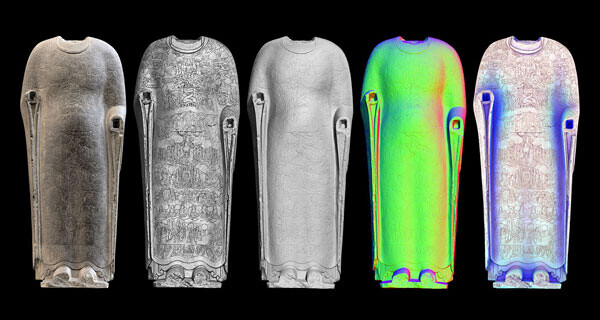

Heterotopia and Internet Centrism
Curator Daniel S. Palmer worries about the implications for institutions that reproduce objects online in earnest, injecting criticality into a debate that seems to otherwise unfold by way of the digital natives’ unchecked proliferation of a museum’s digital content. Palmer warns that these images and the digital modes of participation they advocate “lack the original object’s material conditions and the contemplative possibilities offered by the heterotopia of a gallery space.”24 The site-specific nature of display, collection, scholarship, and education are glazed over by the spectacular disinterested scroll that distributes images in a manner that obliterates the fundamental requirements for the museum’s subject.
While pleas to retain the heterotopic museological space appear to re-empower the “hegemony” of the Western museum, this is only a problem when we ignore any manner of abuses committed by the owners of the network of networks known as the “internet”—a privately run infrastructure manipulated for profit by the owners of the means of transmission and storage. Holding a database in some higher esteem, since it does not require the subject’s mediation into cultural narrative, does not cure the hegemony of the museum any more than it escalates institutions into a technocratic quandary with far more potential for transgressions of capital. And this is where we find that an ideology of Internet Centrism dictates the very terms of the question at hand.25
Internet Centrism is a widely held view that treats the internet as a separate, monolithic entity rather than a pluralized network. It casts the internet as a “thing” that swallows all related activity into its own totalizing logic, one which creates “digital worlds” that are somehow separate from society’s class interests. Yet nothing “belongs” to the internet as such—we merely use it to locate information held on different servers. Rather than laying full claim to cultural artifacts, TCP/IP are means of exchanging data that are not always immanent to a medium. And because of this misplaced faith in the means of transmission, Internet Centrists often ignore the fact that it is a network administered according to the interests of a technocratic ruling class. Those users who advocate for “liberated” or “open” digital transmission may fail to see that privately run digital networks and data brokers are in themselves hegemons par excellence whose claims to structuring a new democratized exchange could hardly be more disingenuous.
For the Internet Centrist, to maintain a “legacy” institution is akin to hindering the logical progression of digital technology, to cling to an outmoded and inefficient set of behaviors. The greatest utility can be derived from aggregating, mapping, and indexing cultural images to be accessed in one master database, accessible via one universal user interface. This denies the existence of a plurality of interpretations. Such hermeneutics shed new light on a body of art production or discourse that is by no measure unitary or optimally organized. The story of the institution, the artist, and the society from which they emerged are at most absorbed as attributes in a grand database schema.
The Internet Centrist asks us, a priori, why we are not looking for data at the museum, and makes adjustments accordingly. This ideology mistranslates characteristics across discrete entities: from museum to database and vice versa. When mediated through the logic of the database, our reliance on the museum to allegorize the past—which Donald Preziosi claims is its singular power to which we are held in thrall—crumbles under the weight of the basest desires of an expanding appetite for rewritable content and socialized experiences.26 The curatorial choices that follow will work in accord with the logic of the private networks that handle them, not the interests of the authors who produced them.
A database is structured to accommodate information that is too vast to be accepted in one gesture, and it is indexed consistently so as to allow for uniform, logical retrieval of any of its components. While the museum has storage, its mode of display is fundamentally at odds with the notion that content must be indexed as a matter of its very existence—its holdings are traversed not by an algorithm but by a human subject. What’s more, the cultural technology platforms that run on digital databases have codified the singular art object into their architectures at precisely the time when that format becomes nearly obsolete in its relationship to contemporary art practice. As such the database creates something more fraught than the notion of a canonical object: each row is a single manipulatable object stored as a result set for which fewer and fewer of its users might query to restage history.
The metabolism of the database, though it collects and stores objects, seeks an ahistorical utopia that will transcend time to achieve an infinitely scalable present. A stream of “free,” “open,” and decontextualized image files that are organized for retrievability by an algorithm are not only an affront to the museum’s subject, but also to the most essential concerns of a historiographical fabric that resists network production.
If the museum is where we accumulate or mark off time by means of objects, then the database is where we accumulate the data produced by an ever-mutating present. At a time when the myth of the ideologically free database and its image metabolism make incursions into the institution, the museum may, contrary to the economic conditions that surround it, retain its historical role as an expression of humanity’s desire for a making things not just total, but immortal. Still, if the museum calls out to be modeled like a database, it will be because the museum has always stood as a symbolic reflection of a society’s structure.
Hito Steyerl, “Is a Museum a Factory,” e-flux journal no. 7 (June 2009) →.
JiaJia Fei, “Digital as a Dimension of Everything,” The Exhibitionist, Dec. 19, 2013. →.
See →.
Lev Manovich, The Language of New Media Cambridge (MIT Press, 2001), 218–219 and 221.
Matthew Clair has identified five cultural logics of neoliberalism in the course of his research into avant-garde literary production in the digital age, outlined in his presentation “Rethinking Technology and Culture: Digital Technologies and Neoliberalism in the Literary Field,” delivered at the conference Theorizing the Web, April 26, 2014. They include: Entrepreneurship, or the value of the freedom of the individual in the marketplace, specifically the liberty to work when, how and where one prefers; Market Faith, that the market is itself a rational institution; Profit-Maximization: any product—material or symbolic—should be placed in the marketplace and valued in such a way as to maximize the economic profit that the seller might receive; Efficiency: balancing the quality of the product with the speed and cost of its production; Ego-centricity: values the individual over the community, often at the expense of global concerns.
Rob Kitchin, The Data Revolution: Big Data, Open Data, Data Infrastructures & Their Consequences (Thousand Oaks, CA: Sage, 2014), 48 and 61.
Ibid.
Karsten Schubert, The Curator’s Egg: The Evolution of the Museum Concept from the French Revolution to the Present Day (London: Ridinghouse, 2009), 67–80.
Lane Relyea, Your Everyday Art World (Cambridge, MA: MIT Press, 2013), 17 and 181.
Kitchin, The Data Revolution, 3.
Manovich, The Language of New Media, 227–28.
This development refers in part to the intramural debates about curating new media art. The phrase “Art Formerly Known as New Media” is taken from an eponymous exhibition curated by Sarah Cook and Stephen Dietz in 2005 at the Banff New Media Institute, whose works “challenge[d
David Joselit, After Art (Princeton: Princeton University Press, 2012), 2.
Ibid., 56, 55, and 89.
It is not my intention to discuss the definitions of the term “post-internet” or to debate the genealogy of this concept, apart from acknowledging its relation to some aspects of the problems for the institution at large. For an extensive exploration of the genealogy of the term, see Karen Archey and Robin Peckham’s .pdf exhibition catalogue for “Art Post-Internet” at the Ullens Center for Contemporary Art →.
Artie Vierkant, “Image Object Post-Internet,” 2010 →.
Boris Groys, Art Power (Cambridge. MA: MIT Press, 2010). Groys talks of the impetus for artists to compete on the same open market as mass media.
Donald Preziosi, “The Art of Art History,” in The Art of Art History: A Critical Anthology, ed. Donald Preziosi (New York: Oxford University Press, 1998), 511.
Vierkant, “Image Object Post-Internet.”
Groys, Art Power, 84.
Ibid., 85.
Boris Groys, “Entering the Flow: Museum between Archive and Gesamtkunstwerk,” e-flux journal 50 (Dec. 2013). →.
In After Art, David Joselit speaks of a similar concept, namely the American museum as ”a massive money-laundering operation: turning finance capital into cultural capital and putting a democratic face on the accumulation of wealth” as well as the notion of images as currency. See After Art, 71.
Daniel Palmer, “Share and Share Alike: Museums and the Digital Image Explosion,” The Exhibitionist, Jan. 6, 2014. →.
Evgeny Morozov is among the more prominent voices describing the abuses of Internet Centrism, namely in To Save Everything Click Here (2013) and elsewhere, though the concept has a prehistory in media theory.
Preziosi, “The Art of Art History,” 511.
